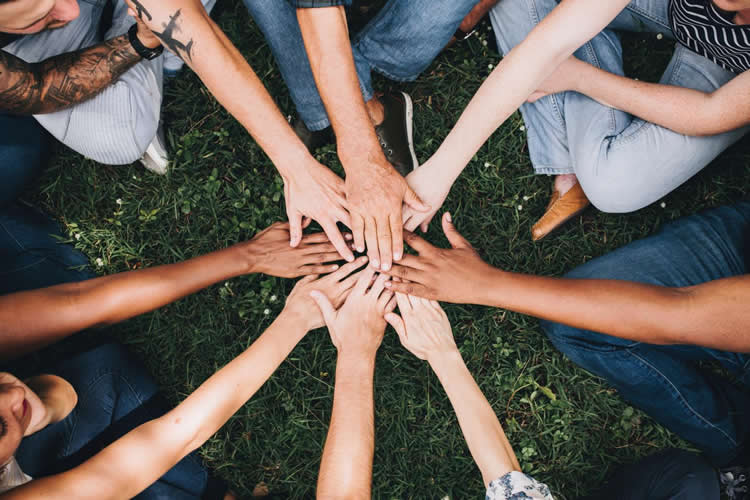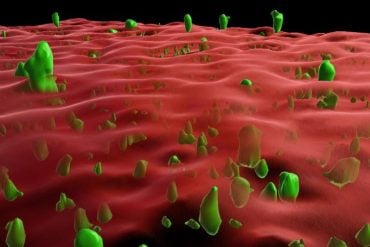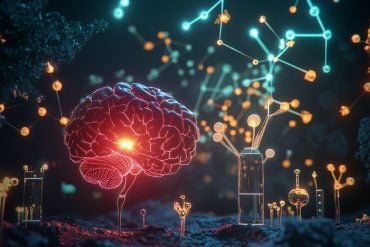Summary: According to researchers, physical coordination is more beneficial in larger groups. The findings could help improve current physical rehabilitation techniques by training patients in groups to improve movement skills.
Source: Tokyo Institute of Technology.
Researchers at Tokyo Institute of Technology, Imperial College London and the University of Tokyo have demonstrated that physical coordination is more beneficial in larger groups.
The researchers used robotic interfaces to test coordination in groups of two, three and four partners, and found that performance was improving with every additional group member.
The researchers believe the findings can clarify how a group of people can work together, for example to move and maneuver a large table together. This may also lead to improving the outcomes of physical rehabilitation by training patients in groups.
Scientists from Imperial College London, CNRS in France and ATR in Japan previously revealed the haptic communication in pairs in a task similar to partner dancing, and showed how performance at a physical task is improved and learned better when practicing with a partner.
The new study, published today in eLife, extends this finding to trios and quartets by clarifying haptic communication in groups critical to society.
Dr Atsushi Takagi, lead author of the study who resides at the Institute of Innovative Research at Tokyo Institute of Technology (Tokyo Tech), said: “We were shocked by how well and fast partners learned to coordinate as a group through touch. Imagine trying to move a banquet table at a crowded wedding venue. With verbal communication, it’s immensely challenging to coordinate with others to ensure the table doesn’t bump against something, and the more people there are, the longer it takes to reach verbal consensus. With touch, coordination emerges in a matter of seconds, and the time taken to reach consensus is the same, irrespective of group size.”
Professor Etienne Burdet of Imperial College, the senior author of this study, added: “We expected that the performance would deteriorate with the noisy force of each additional group member. However the performance improved with each group member, as each individual connects to a virtual collective hand which is the average of all partners’ hands, so that the noise decreases with the number of partners”.

The researchers found that the key to physical coordination was the ability to infer the group’s goal through touch. The same coordination mechanism was used in a previous study by Takagi and colleagues to design a “human-like” robot partner that coordinated with a human partner.
In the new study, the researchers conducted computer simulations of the task to test what information was shared within the group through touch. Takagi believes that a deeper understanding of the coordination mechanism will yield an algorithm for a group of robots to carry out physical tasks together.
The research was carried out in partnership with Imperial College London in the UK, and the University of Tokyo in Japan.
Source: Emiko Kawaguchi – Tokyo Institute of Technology
Publisher: Organized by NeuroscienceNews.com.
Image Source: NeuroscienceNews.com image is credited to Pexels.
Original Research: Open access research for “Individuals physically interacting in a group rapidly coordinate their movement by estimating the collective goal” by Atsushi Takagi, Masaya Hirashima, Daichi Nozaki, and Etienne Burdet in eLife. Published February 12 2019.
doi:10.7554/eLife.41328
[cbtabs][cbtab title=”MLA”]Tokyo Institute of Technology”More is Better When Coordinating with Others.” NeuroscienceNews. NeuroscienceNews, 12 February 2019.
<https://neurosciencenews.com/group-physical-coordination-10728/>.[/cbtab][cbtab title=”APA”]Tokyo Institute of Technology(2019, February 12). More is Better When Coordinating with Others. NeuroscienceNews. Retrieved February 12, 2019 from https://neurosciencenews.com/group-physical-coordination-10728/[/cbtab][cbtab title=”Chicago”]Tokyo Institute of Technology”More is Better When Coordinating with Others.” https://neurosciencenews.com/group-physical-coordination-10728/ (accessed February 12, 2019).[/cbtab][/cbtabs]
Abstract
Individuals physically interacting in a group rapidly coordinate their movement by estimating the collective goals
How can a human collective coordinate, for example to move a banquet table, when each person is influenced by the inertia of others who may be inferior at the task? We hypothesized that large groups cannot coordinate through touch alone, accruing to a zero-sum scenario where individuals inferior at the task hinder superior ones. We tested this hypothesis by examining how dyads, triads and tetrads, whose right hands were physically coupled together, followed a common moving target. Surprisingly, superior individuals followed the target accurately even when coupled to an inferior group, and the interaction benefits increased with the group size. A computational model shows that these benefits arose as each individual uses their respective interaction force to infer the collective’s target and enhance their movement planning, which permitted coordination in seconds independent of the collective’s size. By estimating the collective’s movement goal, its individuals make physical interaction beneficial, swift and scalable.






